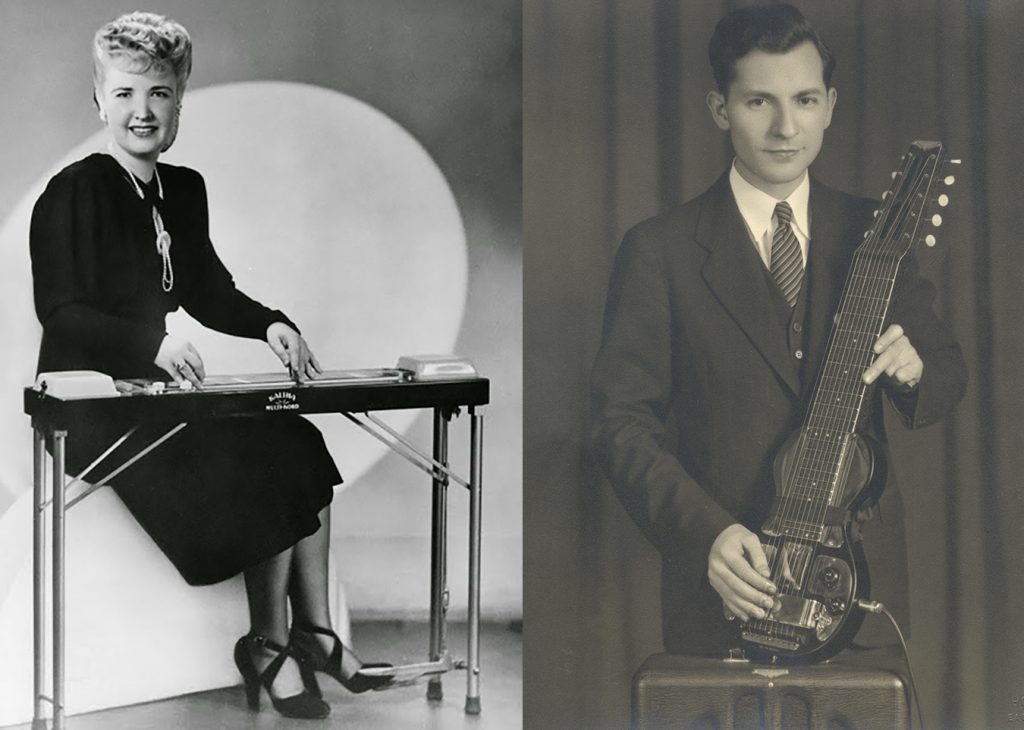America’s fascination with Hawaiian culture reached its peak during the Great Depression. The country needed a temporary escape from the Depression’s daily uncertainties, and its people eagerly embraced Hawaiian music for their imaginary travels to exotic places. By this time, “slack-key” guitar had already become a part of mainstream American musical culture with its use of altered tunings and finger picking techniques first popularized in Hawaii by Portuguese sugar cane workers. Slack-key styles of the 1830s blended western-European performance techniques on a six-stringed instrument, called the guitarra portuguesa, and traditional Hawaiian melodies played on a four-stringed instrument originally called the ukeke, but today referred to as the ukulele.
Two of America’s leading performers, innovators, and educators of Hawaiian music in the 1930s and 40s were Letritia Kandle (1915-2010) and Eddie Alkire (1907-1981). Like many Americans, Kandle’s first encounter with the guitar was through Warner Baxter’s performance as the Cisco Kid in the film, In Old Arizona (1928). Although her early music experiences were with the Spanish style guitar, after watching performances during the Hawaiian exhibit at the 1933 Century of Progress Exhibition in Chicago, Letritia was inspired to take up the Hawaiian guitar. The following year she formed an all-women’s steel guitar ensemble called the Kohala Girls. In 1937, Paul Whiteman invited her to perform with his jazz band during his radio hour. She performed on an instrument of her own design; a four-neck electric guitar called the “Grand Letar.” By the early 1940s, Kandle had become a leading teacher of the steel guitar in downtown Chicago and eventually became the conductor of the Chicago Plectrophonic Orchestra, an ensemble made up of various string instruments including ukuleles and steel guitars.
Eddie Alkire began his career as an electrician in the coalmines of West Virginia. In the mid-1920s, he taught himself to play the steel guitar by enrolling in a series of correspondence courses. In 1929, he left electrical engineering to perform with the Oahu Serenaders, a group affiliated with Cleveland’s Oahu Publishing Company. As a member of this unique music ensemble, Alkire performed weekly on nationally broadcast radio shows on NBC and CBS. In 1934, he left the Oahu Publishing Company and formed his own music-publishing company and steel-guitar correspondence school. Five years later, he invented a new 10-string electric guitar, called the EHarp (pronounced Ay-Harp).
This new exhibit examines the innovative teaching methods and new guitar technologies developed by Letritia Kandle and Eddie Alkire during the 1930s and 1940s. The physical exhibit opens on December 8th, and visitors may make appointments to view this new show by calling 217-333-4577. The online version of this show will open on December 21, 2020. More information to follow later this month. Any questions about the exhibition should be emailed to schwrtzs@illinois.edu.
